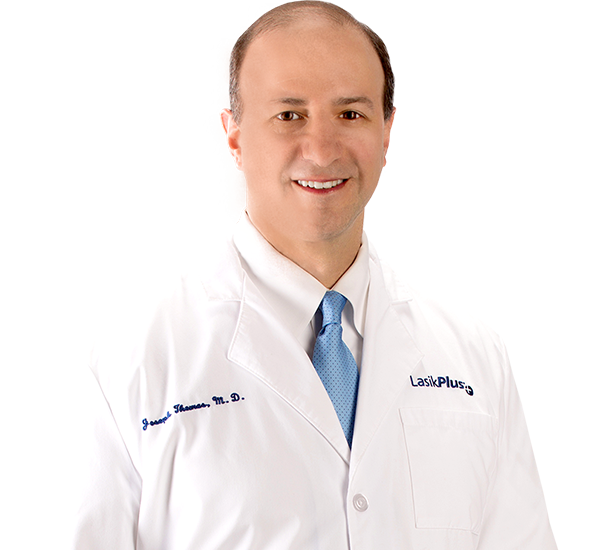-
See the Difference: Save $1,000 on LASIK , Find More
*Must mention this promotion and be treated before April 30 of 2025 to qualify. $1,000 off for both eyes on standard Wavelight price, $500 off for one eye. Cannot be combined with any other offers.
Laser eye surgery: Does it truly deliver 20/20 vision?
One-half of Americans over the age of 20 wear eyeglasses or contact lenses to correct their vision. Most of these individuals have common conditions — nearsightedness, farsightedness or astigmatism — that prevent their eyes from focusing light into perfectly sharp images.
For the past 40 years, specially-trained eye doctors have been performing procedures to reshape the eye and correct these conditions. LASIK, the most popular eye reshaping procedure in the United States, involves laser remodeling of the cornea.
Corneal Anatomy
The cornea is the clear window at the front of your eye. It consists of several layers of transparent skin cells draped over a dome that provides structural and nutritional support. If the surface of your cornea is irregular, or the shape is too angular or too flat, the light entering your eye does not focus properly. This causes blurriness or distortion of the images that you see. LASIK eye surgery can fix most structural corneal abnormalities and help improve vision.
Focusing Mechanism
Your corneas and the thin film of tears overlying them provide about two-thirds of your eyes’ light-focusing capacity. In order to transmit light without distortion, the contour of a cornea — like that of a high-quality camera lens — must be perfectly spherical. However, many people’s corneas are imperfect. Excessively steep corneas cause nearsightedness. Abnormally flat corneas lead to farsightedness. A warped cornea, or astigmatism, is characterized by a blurring of specific portions of the images that you see. LASIK reshapes your cornea to a more spherical form, helping correct the way your corneas focus light.
Procedure
Several types of laser procedures are used to reshape corneas. Your doctor will thoroughly examine your eyes to determine the technique likely to work best for you. The most common procedure involves creating a hinged flap — either with an extremely thin, machine-driven blade or a special laser — at the front of your cornea to expose its undersurface. The doctor then uses a computerized laser to sculpt the exposed corneal tissue and correct the defects identified during your preoperative evaluation. The flap is then returned to its original position.
Mild to moderate visual deficits require less corneal sculpting than severe forms of nearsightedness, farsightedness and astigmatism. The degree of corneal reshaping required to correct your vision affects the likelihood of achieving 20/20 vision after the procedure. Although most people who require extensive corneal sculpting experience a significant improvement in their vision, they are less likely to experience 20/20 vision after LASIK compared to people with less severe corneal abnormalities.
Your vision may fluctuate for up to six months after laser eye surgery as your eyes heal. Your need for corrective lenses may also vary during this period until your vision stabilizes.
Outcomes
While LASIK offers acceptable outcomes for the majority of patients, and many people can perform everyday tasks without corrective lenses, 20/20 vision cannot always be achieved. Postoperative satisfaction is determined by a variety of factors, including the type and severity of your original visual problem, the technique used to reshape your cornea and your expectations prior to the procedure. Your doctor will review these issues before you decide whether LASIK eye surgery is appropriate for you.
References
Archives of Ophthalmology: Prevalence of Refractive Error in the United States, 1999-2004
American Family Physician: LASIK: A Primer for Family Physicians
Ophthalmology: LASIK World Literature Review: Quality of Life and Patient Satisfaction
YOU MIGHT ALSO LIKE...
VISION CENTERS NEAR ME
Enter your zip code, city, or a doctor name below to find a vision center.
Find out if LASIK is right for you
Congratulations!
Your vision issues can most likely be corrected with a LASIK procedure. Schedule a free consultation today.
Answer 5 simple questions to see if you are a candidate
What is your age group?
Do you wear...
With corrective lenses, do you have...
Have you ever been told that you have astigmatism?
Have you ever been told that you have dry eyes?
Request an Information Kit
Learn about your surgeon, the latest advanced technology, procedures, options and benefits, financing options, and what to expect from your LASIKPlus experience.









